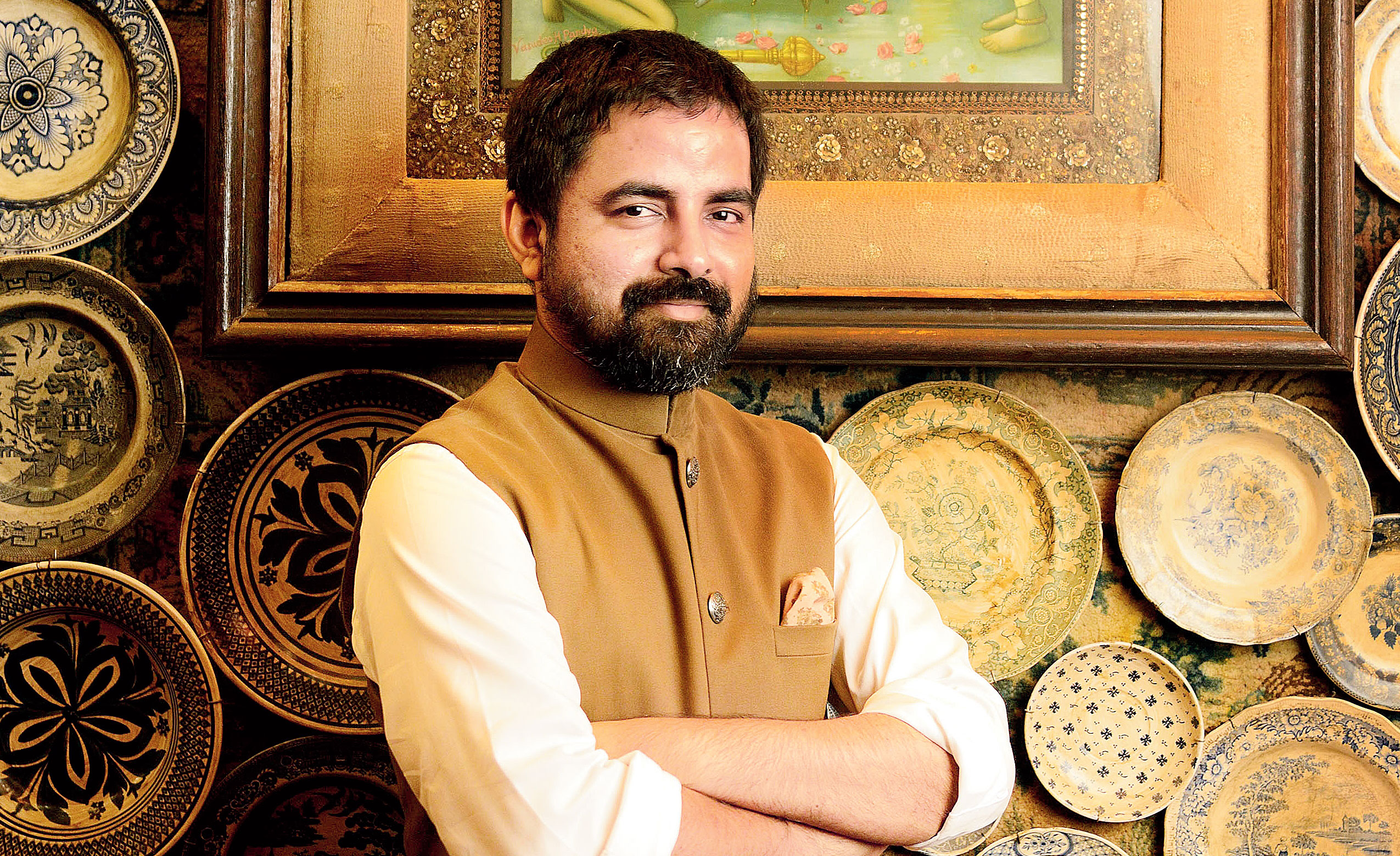Finally we can all afford a Sabyasachi” was the general mood in the t2 girl gang the day the SabyasachixHM collaboration was announced on the designer’s Instagram. Super excited, I dialled his number pronto, in the hope of more deets on the collection. Sabya, however, was uncharacteristically tight-lipped about the collection he has done for the high-street fashion biggie. Instead, he was more keen to talk to me about another recent collab — with Bergdorf Goodman! We decided to meet the next day for a chat on the jewellery collection that he has done for Bergdorf Goodman in New York, that is slated for a soft launch today. Before the meeting, Sabya had a homework for me: he asked me to watch a docu film called Scatter My Ashes at Bergdorf! I did, like an obedient student, and knew instantly why he had asked me to watch it. “I don’t care what people say, people might say I am too proud or arrogant, but to me it’s a huge deal, I am very excited about it… I don’t know whether in the last 20 years I have been this excited about anything,” he told me in the course of the chat.
And we totally get it… yes, it’s a huge deal… Bergdorf Goodman is!
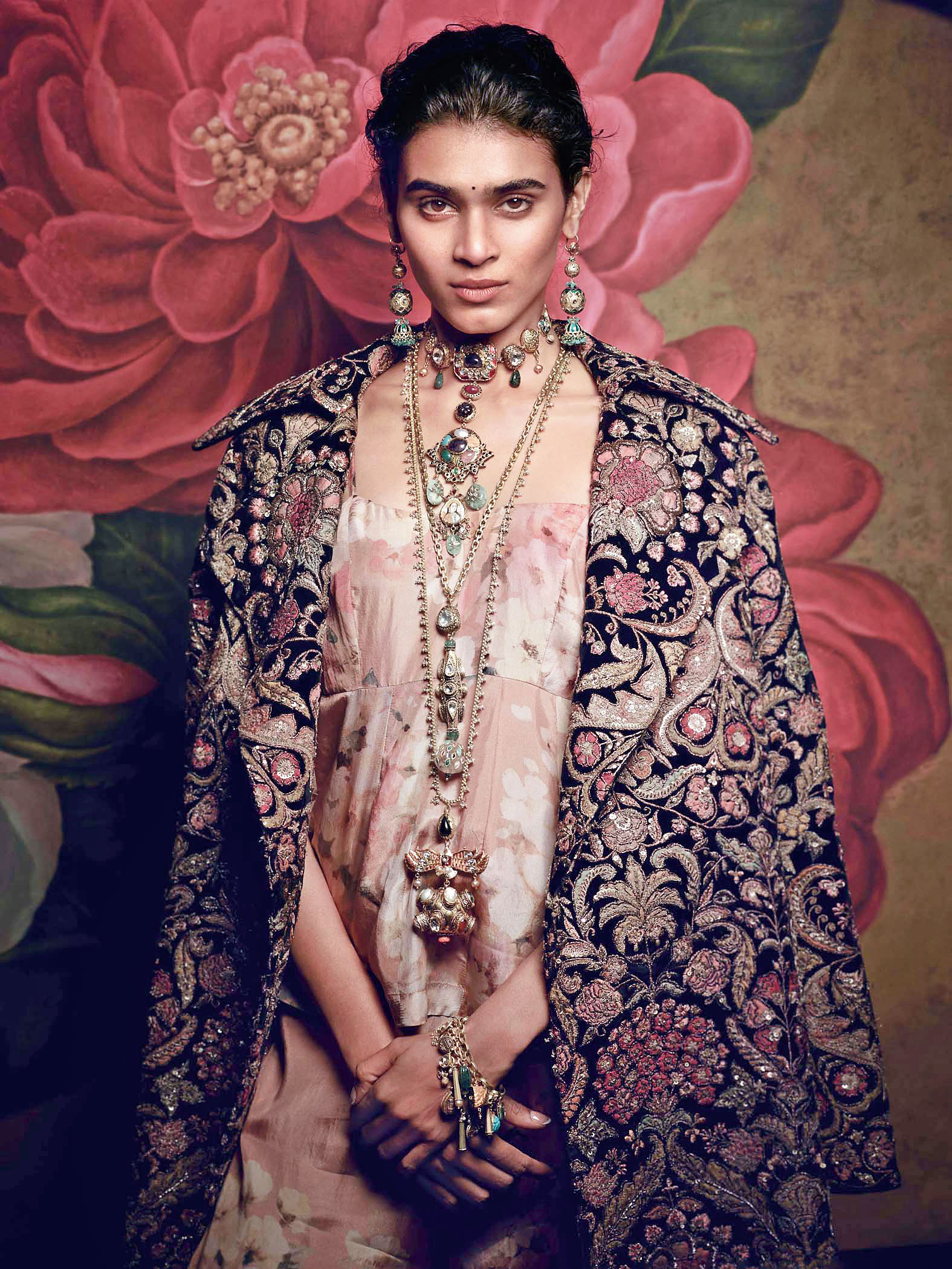
'Linda and I eventually became friends and so I was very surprised when she told me I would like you to partner with Bergdorf Goodman and bring your jewellery to New York. Now, I have been in this industry for 20 years, in 20 years my clothes could not go to Bergdorf, but in two years my jewellery is going there.' Picture courtesy: Sabyasachi
Being at Bergdorf Goodman
When I was doing fashion week in 2006, I was asked by Rupal Patel (fashion director at Bergdorf Goodman at that time) to show my clothes. I had gone to meet her at Bergdorf but at that time I was not prepared, I was not very sure about the collection, or the way I was manufacturing it… so that was my first stint at Bergdorf… it didn’t happen.
Every single designer or brand in the world, whether it was Chanel, whether it was Fendi that was single-handedly made by Bergdorf, or Michael Kors that was discovered by Bergdorf, or Dolce & Gabbana who was not allowed to be in Bergdorf for 10 years because of some exclusivity issue... everyone of us, our ultimate goal is to sell at Bergdorf! You know, Bergdorf is not a store, it is an institution… whether it is Halston who used to sit there and make hats — and he famously made the hat that was worn by Jacqueline Kennedy during the time that president Kennedy was being sworn in and she also wore the same hat when he was assassinated — whether it was Elizabeth Taylor coming there to buy her mink, or whether it was Barbra Streisand who actually sang there… whether it was John Lennon and Yoko Ono who came there to buy 80-odd coats, or Cher who had once said famously on TV that ‘I got spotted at the Bergdorf elevators’… like everybody who is anybody as a customer shops at Bergdorf and everybody who is anybody as a designer they all want to be at Bergdorf. But I seriously did not think it will happen to me. I didn’t have the confidence… and from Calcutta to Bergdorf in New York is a long journey… sometimes you don’t even dare to dream such dreams.
Then as luck would have it, Christian (Louboutin) and I were doing our collaboration and I went with Christian to a shoe-signing event at Bergdorf, and through him I met Linda Fargo (senior vice president of the fashion office and the director of women’s fashion and store presentation for Bergdorf Goodman), who they say is the most influential woman in New York fashion after Anna Wintour (of Vogue). Linda is the one who is probably the style-maker of Bergdorf… she is the one who decides what will be in Bergdorf. Then much later Linda came with me to Calcutta, stayed at home with me, and then she came back again to see my show in Bombay, the 20-year show…. I did not know what was going on in her mind because Linda and I eventually became friends and so I was very surprised when she told me I would like you to partner with Bergdorf Goodman and bring your jewellery to New York. Now, I have been in this industry for 20 years, in 20 years my clothes could not go to Bergdorf, but in two years my jewellery is going there.
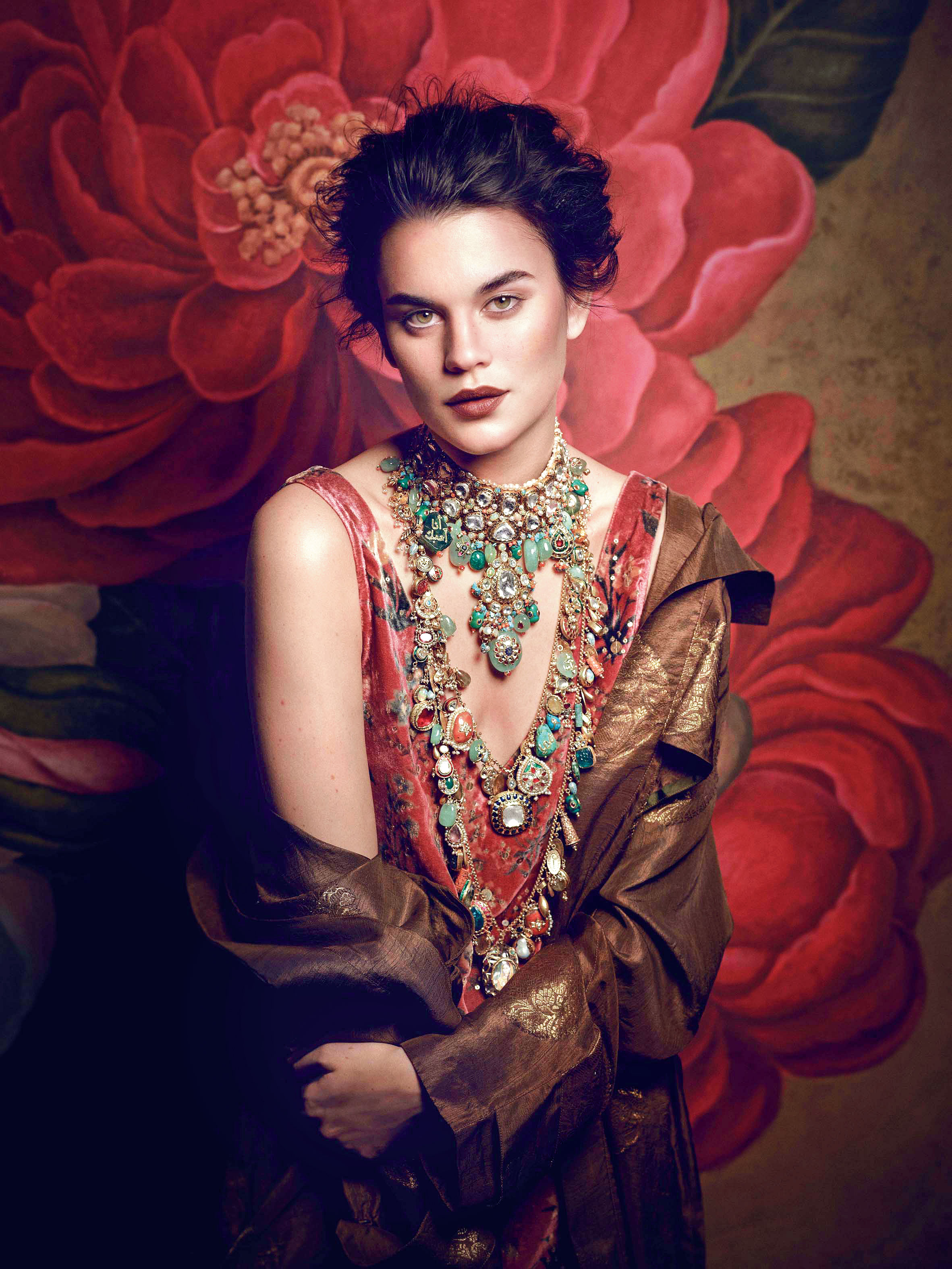
'I started making jewellery with a completely different perspective; I wanted to dress up brides.' Picture courtesy: Sabyasachi
The jewellery success story
I started making jewellery with a completely different perspective; I wanted to dress up brides. See, in bridals, the most important thing is the image, that one picture that the bride sends out… beauty and cosmetics and jewellery and clothing together create that picture… of course, I don’t have the bandwidth to create a beauty line, which I eventually will in the years to come, but I said let’s start with jewellery because it is easier to do because it is still a small-scale industry even though the investments are quite high, and let’s start controlling the entire look… that’s how I started with jewellery.
You know, if you had googled #Sabyasachi or #SabyasachiOfficial, two years ago you would only get people selling fakes or people trying to sell their clothes using the Sabyasachi hashtag, so that their search engines were optimised… like even for T-shirts or shirts that I have never made, the hashtag was Sabyasachi… now if you actually look for those tags on the Internet you will only see pieces of fake jewellery. So much so that even fake jewellery of mine has reached America!
When I started making jewellery two years ago, I got ruthless opposition from the big jewellers in the country… from big brands embargoing actresses to use my name or tagging me when they wear my jewellery, to smaller brands confusing customers that his quality is not good, his price is quite high, he doesn’t manufacture his jewellery… many many rumours… I think they felt threatened that if I start making jewellery I am going to finish everybody’s business… well it’s not wrong because that’s the mission. If Sabyasachi clothing has become big, I think Sabyasachi jewellery will become massive! And I said I will silently work and I will find opportunities of getting the jewellery to the right people and then one after the other things started happening… Oprah Winfrey wore my jewellery for a magazine cover, Katy Perry actually shot in my jewellery at my Bombay store, there was Christy Turlington… then suddenly all the royal families in the Middle-East started coming to us to buy jewellery… the most discerning customers in India started buying jewellery from us. So much so that, you know it took me five years to build my first flagship store for clothing, we have already built the first of our jewellery flagship stores in Bombay… we are building the second one in New York.
And Bergdorf, which only gives you small areas and corners, is actually converting a whole section into a Sabyasachi store. And it’s going to be there for two months, because we are testing waters together but they are not going to leave any stone unturned to make sure they get the best of the best clientele from all over the world. Also, the big thing that happened, I did the three weddings — Anushka Sharma’s, Deepika Padukone’s and Priyanka Chopra’s — and in New York people were very excited that I did Priyanka’s wedding jewellery. So Bergdorf has already started getting enquiries from Russia, China, England, America, about when the jewellery would be launched.
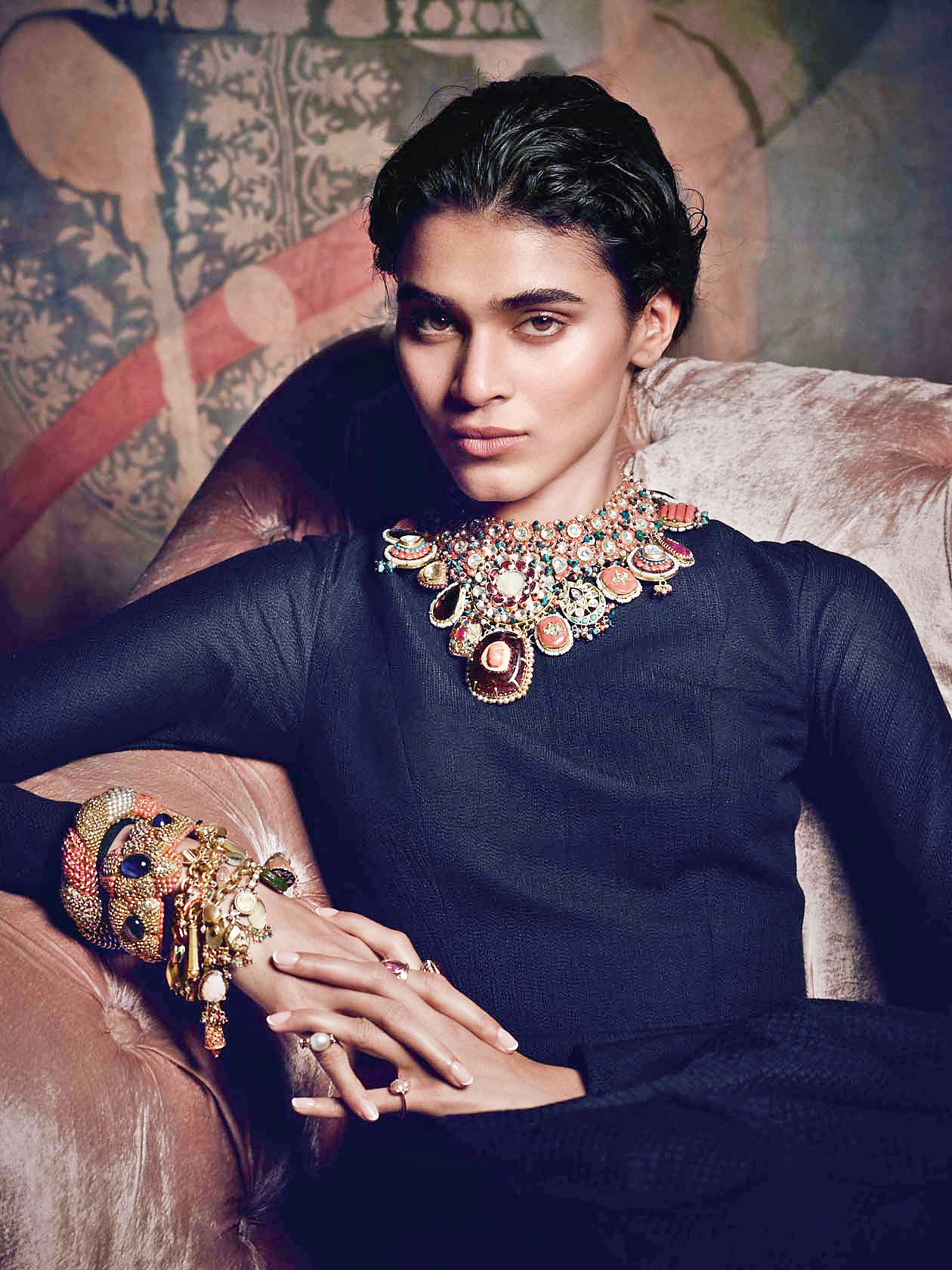
'I am very proud of the fact that the entire essence of my jewellery is very Bengali. You know what we are trying to do, we are trying to create reverse migration.' Picture courtesy: Sabyasachi
Man on a mission
I am very proud of the fact that the entire essence of my jewellery is very Bengali. You know what we are trying to do, we are trying to create reverse migration. Like when I started 20 years ago, most of our karigars from Bengal were working for big export houses and designers in Delhi and Bombay, now almost all designers have started setting up shops in Calcutta and they have all started setting up back offices in Calcutta, to use labour. My entire idea was to bring the labour that belonged to Bengal back to Bengal again. We did that with clothing, now the same thing will happen with jewellery. It does not matter who the jeweller is, how big the jeweller is, every jeweller’s main karigars are Bengali, all over the country. And they have the best workmanship. So now they are coming back and working with our brand, they are leaving bigger brands and coming and working with our brand because they are proud to associate with a Bengali and they say that ‘Banglay kotha bolbo aar maachh bhaat khabo….’
A big part of the sustainability conversation in crafts is to be able to create reverse migration where people come back to their area of craftsmanship and they start doing their jobs. Not only do you work, you also teach your next generation… and textiles and handicrafts are a very very important part of our cultural ecosystem. And the position that we have reached and the power that we have now, the more well-known I am becoming worldwide, the more I am becoming arrogant about my cultural heritage. Earlier it was Sabyasachi India, now it’s become Sabyasachi Calcutta. And I just want to say that Bengal had at one time created a cultural renaissance in India, history repeats itself and it’s happening again… and while it happens, I want to be the front runner in it. Bergdorf will open many windows for us in America, maybe other conversations about other collaborations will start, and we have taken a pledge within the company that everything that we do will be Bengal first.
I remember we had a jewellery company in Calcutta a very long time ago, called Hamilton. They used to make the finest jewellery, which was up there with the Tiffanys and the Cartiers of the world. Hamilton got sold and I don’t know what they are doing with the brand any more. My road map is very clear… I want to create Sabyasachi as the next Cartier from India… it’ll take me 10 years but I’ll do it.
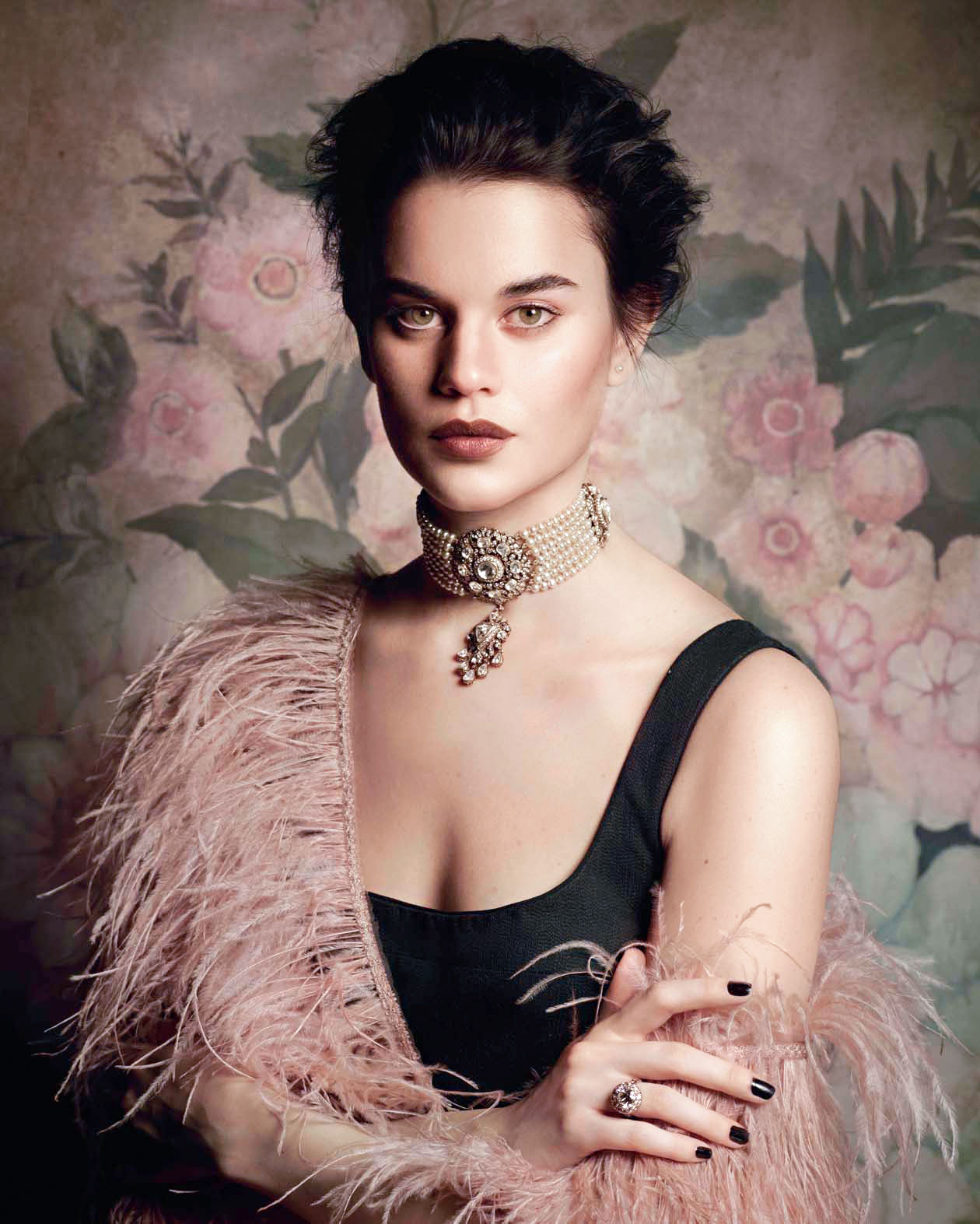
'I think my jewellery has a very strong point of view… I think my jewellery is very fearless. You know, earlier people used to buy jewellery only to park black money or they used to buy jewellery as investment…' Picture courtesy: Sabyasachi
Crafts at the core
I think my jewellery has a very strong point of view… I think my jewellery is very fearless. You know, earlier people used to buy jewellery only to park black money or they used to buy jewellery as investment… I think what happened with my jewellery is that the customer changed. If you have to buy my jewellery, you have to pay in cheque… we are very very clean about the way we sell our jewellery.
Secondly, there used to be a tradition at one point of time that jewellery used to be a family thing… you would go back to your family jeweller… but what happens is when you are working with an unknown jeweller, there really is no accountability. Customers now demand accountability, they want to know how the jewellery is made, are the labour getting proper wages, are you paying your taxes, had your brand done anything to talk about issues of environmental, social or cultural sustainability. Also, you see, the entire idea of luxury has changed worldwide, today people are spending more money on home, travel, food… things that they want to consume… if you are going to buy jewellery that you are going to wear once in a while then it doesn’t work. So America or Europe consume jewellery in a completely different way than India… they buy jewellery because they love it, as a work of art. In India people buy jewellery only as an investment… for the next generation that shift has already happened. They don’t buy jewellery for investment, they buy jewellery to enjoy. To them design matters. So what used to happen earlier, people used to only buy diamond jewellery, solitaires, single line, where it’s only a stone and the making is very little in terms of craftsmanship. So what happens, if you sell the jewellery you get the full value of the stones back. So what you did was you traded in a commodity. But the most important ethos of Indian jewellery is the fact that it was always about great craftsmanship. It was filigree, it was enamelling, it was jadai, it was pohai, how you would string Basras… the entire ethos of jewellery was craftsmanship first.
What we have started doing is, while we maintain superb quality of our stones and our gold and everything, we have started focussing on craftsmanship and craftsmanship is something you have to nurture. I have seen a lot of big jewellery brands in this country where their entitled next generation started jewellery but they do not understand anything about craftsmanship. My brand has been only focussed on craftsmanship for the last 20 years, whether it is in furniture or interiors or clothing we were doing. So I think if you look at everything worldwide… if you see the last Dior show… they celebrated craftsmanship… so the big story about luxury consumption globally is about craftsmanship. So today if you look at our jewellery, we have brought back what used to exist in India 50, 60, 70 years ago, before the great tirade of buying jewellery only for investment happened and completely killed craftsmanship. To me, a diamond cannot be luxury till a diamond is set very beautifully. It’s the setting of the diamond, how beautifully it is crafted… otherwise you are just trading in a commodity. For me, there is no difference between an expensive marble and an expensive diamond that is not set beautifully. And I will tell you something, now diamonds can be created in laboratories… it is no longer rare, something that is really rare is great craftsmanship. Thirty years later, if you are not going to save the ecosystem, the second or the third generation might not know how to make it any more, because craft is paramparik in India, it goes from father to son. And I am not saying this out of arrogance, but even if people do not understand the value of my jewellery today, in 15-20 years’ time my jewellery will be worthy of being put in every single museum around the world, because that craftsmanship will become priceless in years to come.
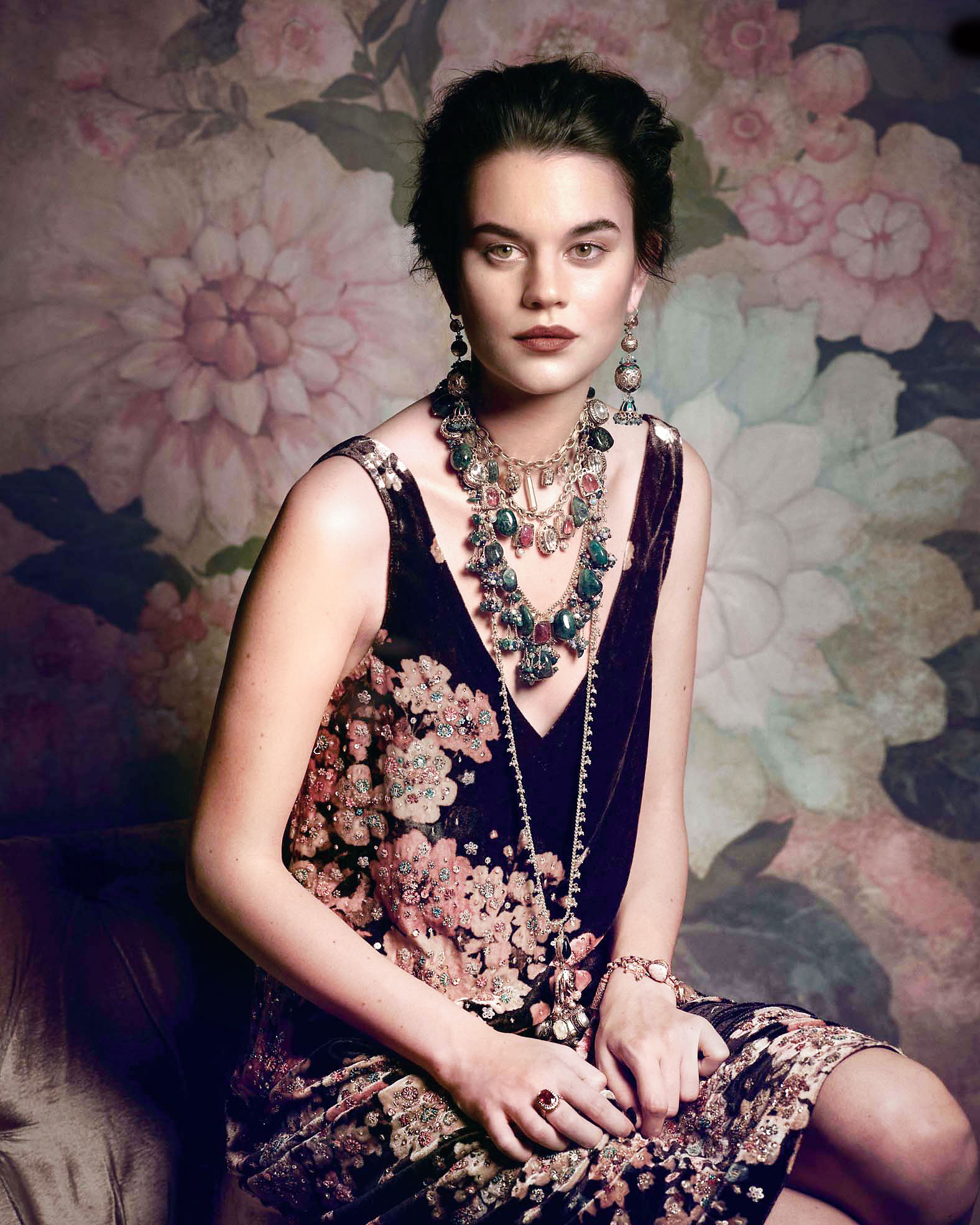
'When we started doing mathapatti and nath, the entire country was only doing blow-dried hair and small tikas… the entire idea of doing two big necklaces and the mathapatti and the nath has now become the mandate of every single jeweller and designer trying to make bridals.' Picture courtesy: Sabyasachi
Calling out copycats
When we started doing mathapatti and nath, the entire country was only doing blow-dried hair and small tikas… the entire idea of doing two big necklaces and the mathapatti and the nath has now become the mandate of every single jeweller and designer trying to make bridals. And that is a trend that we started. We have started IPR-ing everything… we have started slapping legal cases against people... my next 10 years will be devoted to claim back everything of ours that people have diluted and taken away from us. They can take everything away from you but they can’t take your integrity and your brand away. And I think if great jewellery has to be born out of India, it has to be born out of Calcutta. Because this is where the most beautiful jewellery started and I will not rest till I make Sabyasachi into one of the most powerful brands in the country, one of the most important brands in the world and one of the big stories and conversations is going to be about jewellery.
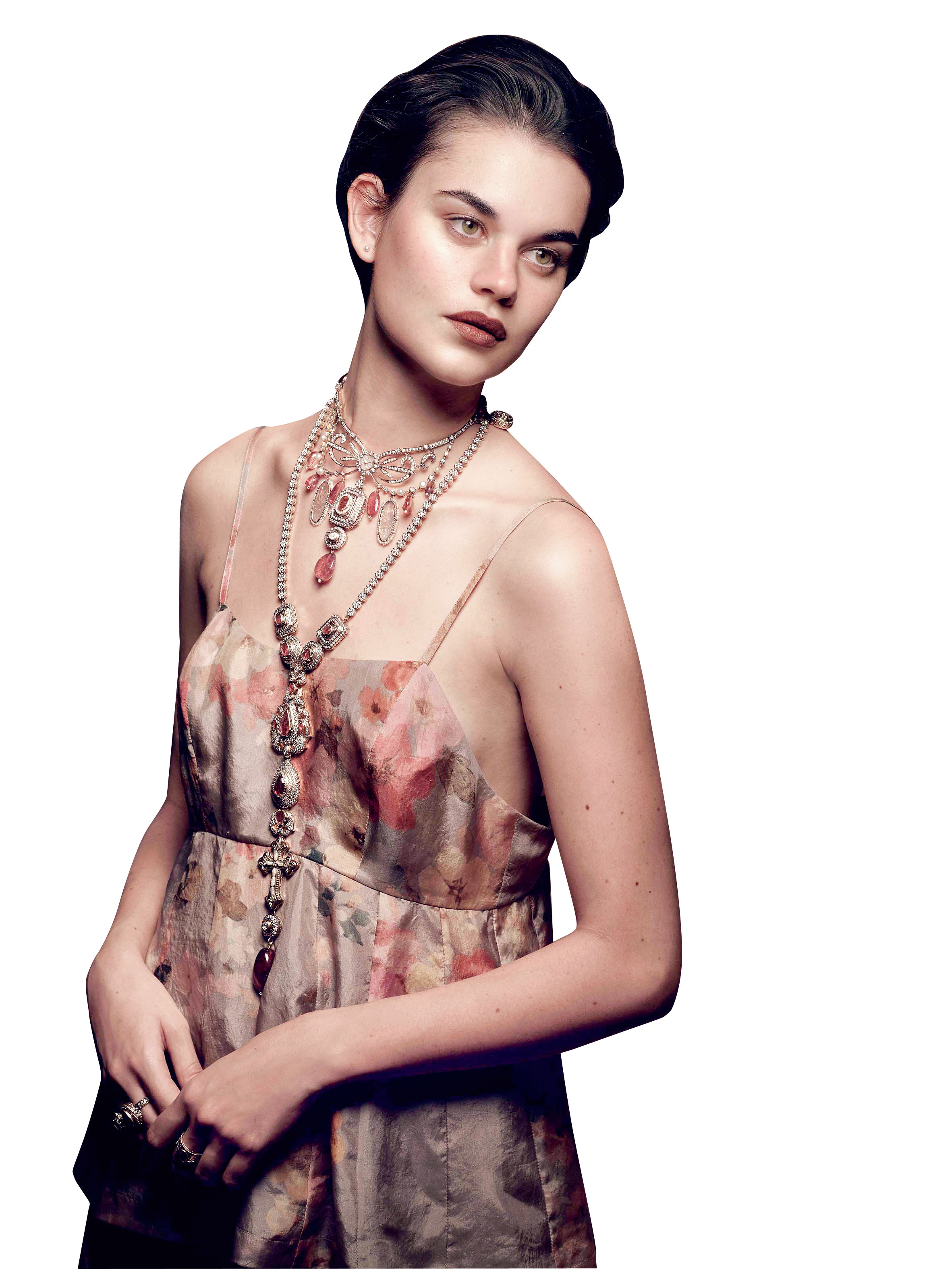
'A lot of these people who came to India sold a lot of jewellery, to be able to buy books or Indian clothes… so there was this small little hawker on the street side who used to actually sell leftover charms and talismans from foreign tourists… I used to actually buy a lot of them and restring them and make jewellery for myself.' Picture courtesy: Sabyasachi
On a winning note
You know what I am most excited about? The most important thing about Bergdorf is the windows, to get a window on 5th Avenue, at Bergdorf Goodman, and during New York Fashion Week is a very big deal… because that’s the time when the whole world’s fashionistas will be in New York. The highest amount of traffic hits Bergdorf during holiday season and fashion week… and to be able to come from Calcutta and be at the windows of Bergdorf for me… I don’t care what people say, people might say I am too proud or arrogant, but to me it’s a huge deal, I am very excited about it… I don’t know whether in the last 20 years I have been this excited about anything.
A lot of people have stolen my crafts and my ideas and they have been very nasty to me, for many many years of my life and I have always been gracious and kept quiet… they spread so many rumours about me, my brand, my crafts… I say the best way to silence critics is to do you work silently and get to the place they can never be.
Sabyasachi takes us through his Bergdorf Goodman collection that has three lines — Sudder, Chowringhee and Bengal Royal...
Sudder: As a child, I was fascinated with hippies. When I was an art and fashion student, I used to go to Blue Sky Cafe (on Sudder Street) and sit there with that one mosambi juice that I could afford, from 6.30 till 10.30 in the morning, till they threw me out of the cafe, only trying to make friends with hippies and trying to sketch them looking at their clothes. Sudder Street for me… of course this was during Dominique Lapierre’s City of Joy… Sudder Street for me was the great escape in Calcutta. From Fairlawn hotel to Globe cinema… infested with foreign tourists and small little cafes and prostitutes and touts, people selling beads and jewellery and scarves and Hare Rama Hare Krishna kurtas and everything…. For me Sudder Street was Benaras meeting Paris. I was very excited and I loved the way that these people wore silver and wood and beads and charms, everything put together, it was very multicultural. A lot of these people who came to India sold a lot of jewellery, to be able to buy books or Indian clothes… so there was this small little hawker on the street side who used to actually sell leftover charms and talismans from foreign tourists… I used to actually buy a lot of them and restring them and make jewellery for myself. I had vowed that at some point of time in my journey I am going to start doing jewellery again and I had kept the Sudder idea in my head for 20 years. This bohemian jewellery of clashing cultures, almost like Byzantine culture, Muslim meets Christianity meets Hinduism meets totem poles meets charms… it’s very inclusive… and the entire idea of this mix and match and this almost tribal meets urban multicultural melting pot started with Sudder Street.
Chowringhee: Aparna Sen’s 36 Chowringhee Lane, then Sankar’s Chowringhee, the Grand hotel, Pink Elephant… you know, if I were to romanticise Calcutta and glamour in Calcutta, it would be Chowringhee… the name, The Oberoi, the novel, the film… everything in my head was about expensive, arrogant, cultured, snobbish glamour. People use diamonds in India in a very formal way, I like to play with diamonds... I like to use the highest quality diamonds with unpolished coral, with turquoise, with wood… and when you have cultural arrogance you can do that… you can defy norms and you can say that okay I am anti-establishment because I have a mind. So Chowringhee is a homage to that kind of a glamour that Bengalis had, which was expensive but extremely matter of fact. They knew that they had class, they knew that they had culture, but for them they were born with it so they never made any big deal about it. Bengal was never about showing off, because they didn’t need anything to show off, everything was from within… Chowringhee represents all of that.
Bengal Royal: It is about fine rose-cuts and diamonds and everything… it is all about precision craftsmanship and labour. You know how royalty would be very very exacting, like they wanted the finest craftsmanship, the finest quality. So Bengal Royal is all plus plus… the highest quality diamonds, the highest grade pearls, the highest grade craftsmanship… it is almost like impossible couture. The pieces are tiny but they are prohibitively expensive and very very beautiful. So these are really for people who like to collect the rarest and highest form of jewellery.

